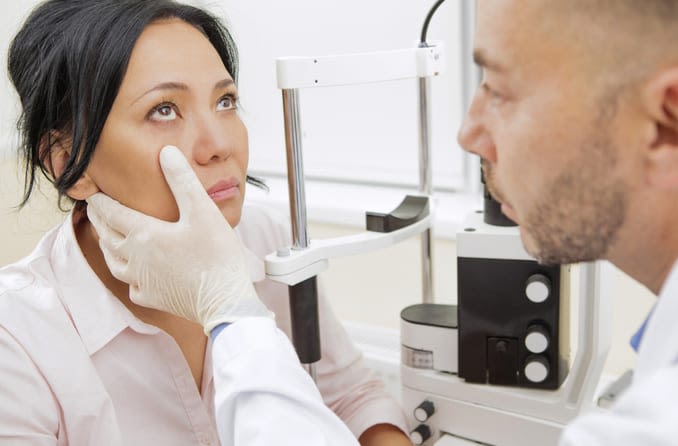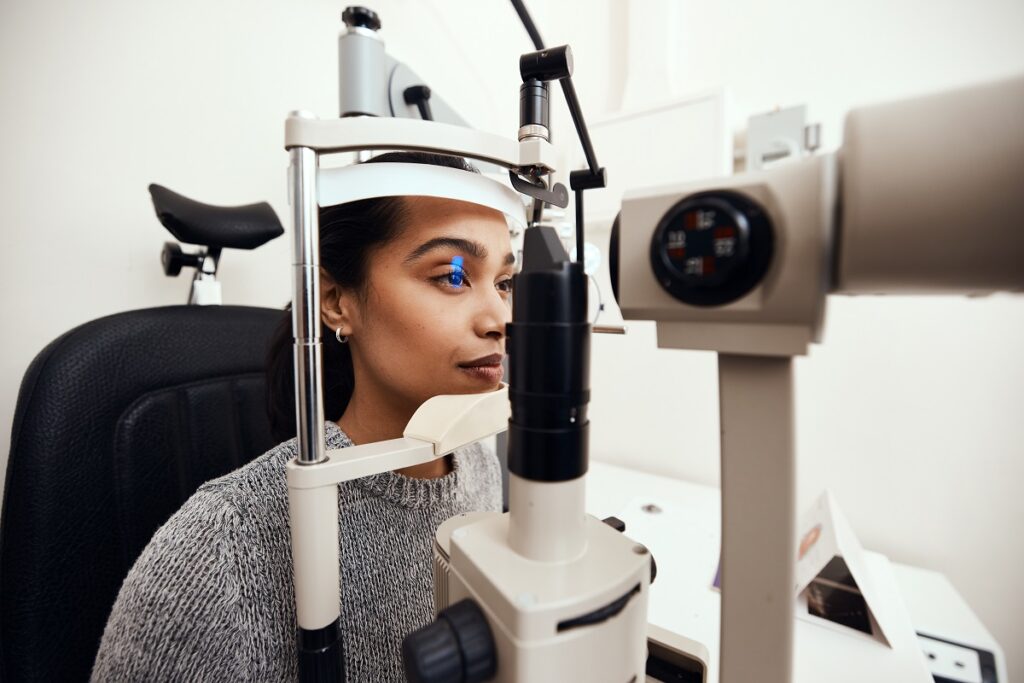Checking Out the most recent Technical Improvements in Optometry and What They Mean for Optometrists
From the accuracy of Optical Comprehensibility Tomography to the nuanced understandings supplied by AI-driven diagnostic tools, these technologies are setting brand-new standards in client evaluation and therapy. As these innovations permeate the technique, eye doctors are faced with the obstacle of welcoming these devices to improve person outcomes.
Technologies in Diagnostic Tools
Progressing the area of optometry, innovations in analysis devices have actually revolutionized the method eye treatment specialists assess and diagnose eye conditions and visual impairments. The past years has observed substantial technical innovations, making it possible for more exact and comprehensive analyses. Optical Comprehensibility Tomography (OCT), for instance, provides high-resolution cross-sectional pictures of the retina, permitting the very early detection of diseases such as glaucoma and age-related macular deterioration. This non-invasive imaging strategy has actually come to be important in contemporary optometric practice.
One more key technology is the introduction of innovative corneal topography systems, which map the surface curvature of the cornea with precision. These devices are particularly useful for fitting get in touch with lenses and detecting corneal conditions. Additionally, electronic retinal imaging has transformed standard ophthalmoscopy, using thorough, panoramic views of the retina that assist in thorough visual exams.
The advancement of wavefront aberrometry has likewise been vital, making it possible for the analysis of refractive errors with unmatched precision (Eye Doctor Optometrist). This technology assists in customizing restorative lenses and boosting medical results for refractive surgical procedures. Jointly, these analysis innovations encourage eye doctors to supply premium person treatment, making certain very early treatment and tailored treatment strategies, ultimately improving aesthetic wellness end results
AI in Person Monitoring
Building on the foundation of advanced analysis tools, the unification of man-made intelligence (AI) in individual management stands for a transformative leap for optometry. AI systems are progressively employed to improve efficiency, accuracy, and customization in client treatment.
Furthermore, AI-driven systems assist in structured client communications and administrative processes. Automated organizing, virtual examinations, and personalized follow-up plans not just boost client satisfaction however additionally enhance time monitoring for practitioners. These systems can triage individuals based upon the urgency of their problems, making certain that those in vital need get prompt attention.
Moreover, AI boosts decision-making by providing optometrists with evidence-based referrals and therapy pathways. By integrating information from digital health and wellness records, AI tools offer understandings that inform professional decisions, reducing the risk of errors and enhancing person end results. As AI remains to develop, its function in individual monitoring will likely increase, improving the landscape of optometric treatment.
Advancements in Retinal Imaging
In the realm of optometry, retinal imaging has seen exceptional technical developments that are enhancing analysis capacities and patient treatment. Advancements such as Optical Coherence Tomography (OCT) and fundus digital photography have revolutionized how optometrists examine the retina and envision.
Improved imaging techniques like OCT angiography are further refining diagnostic precision. This non-invasive method maps blood circulation in the retina, using vital insights right into vascular wellness without the requirement for color shots. Additionally, flexible optics technology is being incorporated right into retinal imaging systems to correct eye aberrations, providing unmatched picture clearness. Such innovations facilitate the recognition of minute retinal changes that can signify condition development.
In addition, advancements in synthetic intelligence are enhancing retinal imaging by making it possible for automated evaluation of large datasets. These systems aid optometrists in determining patterns indicative of pathology, consequently enhancing analysis accuracy and effectiveness. Collectively, these innovations are transforming retinal imaging into a cornerstone of modern-day eye treatment, boosting end results and broadening restorative possibilities.
Teleoptometry's Growing Function
Teleoptometry is significantly ending up being a crucial part of eye care, driven by innovations in data and diagnostic tools. As optometry accepts digital transformation, teleoptometry helps with remote consultations, enabling optometrists to expand their services beyond typical borders. This is particularly advantageous in rural and underserved locations where access to specialized eye treatment is frequently limited. By leveraging high-resolution video conferencing and advanced retinal imaging, optometrists can perform detailed eye exams from afar, guaranteeing timely medical diagnosis and therapy.
The assimilation of expert system (AI) additional enhances teleoptometry, making it possible for the evaluation of aesthetic information and aiding in the detection of eye conditions such as glaucoma and diabetic retinopathy. AI-powered algorithms can swiftly analyze intricate imaging information, offering optometrists with important insights that boost clinical decision-making.
In addition, teleoptometry sustains continuity of treatment with seamless combination with digital health records (EHRs), allowing optometrists to keep detailed individual backgrounds. This makes sure that clients get consistent and individualized treatment even when consulting with various experts.
Regardless of these benefits, difficulties stay, consisting of making certain information safety and security and taking care of client expectations. Teleoptometry stands for a substantial stride in the direction of even more accessible, efficient, and patient-centered eye care. As technology develops, its duty is positioned to expand additionally.

Future Patterns in Eye Care
A myriad of innovative fads is readied to reshape the future of important source eye treatment, driven by technical developments and the advancing needs of clients. One considerable fad is the assimilation of man-made intelligence (AI) in diagnostics, which promises to enhance the precision and efficiency of eye assessments. AI formulas can analyze large quantities of information from retinal pictures, possibly finding problems like diabetic retinopathy and glaucoma earlier than conventional approaches.
Additionally, personalized medicine is getting grip in optometry, with hereditary testing informing tailored therapy plans. This approach aims to enhance patient end results by tailoring treatments to private hereditary accounts. Wearable technology, such as smart contact lenses, is additionally coming up, supplying real-time monitoring of intraocular stress or sugar levels, hence supplying constant understandings into eye and systemic wellness.
The fostering of enhanced truth (AR) and digital truth (VR) in training and person education is one more arising trend. These technologies use immersive experiences that can enhance understanding and abilities both for people and optometrists. As these fads evolve, eye doctors have to stay abreast of technological advancements to supply cutting-edge treatment, guaranteeing improved pop over to these guys client outcomes and complete satisfaction in the dynamic landscape of eye treatment.
Verdict

Jointly, these diagnostic innovations encourage eye doctors to deliver superior individual care, ensuring very early intervention and tailored therapy techniques, inevitably improving visual health results.

As these technologies continue to develop, optometrists must adapt and include them into practice, ultimately maximizing workflow efficiency and boosting the requirement of eye treatment supplied to individuals.
Comments on “Recognizing the Duty of Your Eye Doctor in Preserving Vision”